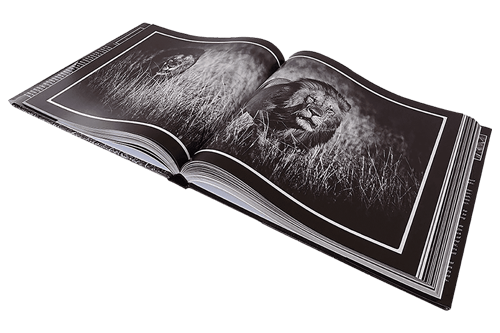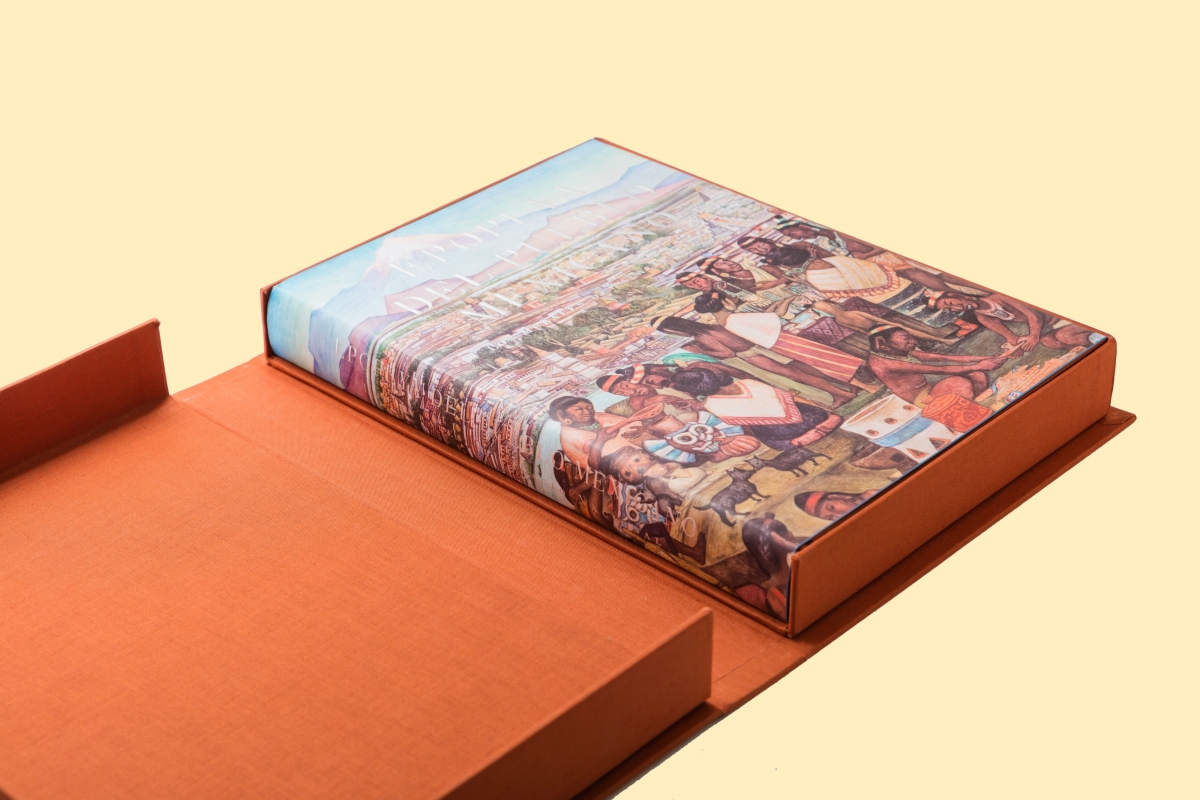Glossy vs. Matte: Choosing the Best Paper for Your art book
Wiki Article
Understanding the Refine Behind Top Notch Art Book Printing for Art Lovers
When it comes to premium art book printing, understanding the details of the procedure can elevate your recognition for the end product. You could not recognize how essential paper option and ink choices are to the vibrancy of art work. Each aspect plays a substantial function in achieving the preferred effect. As you discover the different components of art book printing, you'll discover insights that might change your point of view on art conservation and presentation.The Relevance of Paper Selection in Art Book Printing
When it pertains to art book printing, the selection of paper can make or break the last item. You want your art work to shine, and the ideal paper boosts color vibrancy and detail. Think about variables like weight, texture, and surface; these components considerably impact how viewers perceive your work.As an example, a larger supply conveys high quality and longevity, while a distinctive finish can add depth to images. Smooth paper is exceptional for thorough recreations, allowing fine lines and subtle shades to appear crisp.
Don't ignore the paper's brightness; a brighter sheet can assist colors pop, making your art a lot more eye-catching. You'll also intend to consider how the paper communicates with inks and whether it can deal with the printing process without deforming or bleed-through. Ultimately, picking the ideal paper establishes the stage for your art, ensuring it catches the audience's interest equally as you envisioned.
Selecting the Right Inks for Lively Recreations
Choosing the ideal inks is just as crucial as choosing top quality paper to accomplish vibrant recreations in your art book. When you're publishing artwork, you want colors that pop and precisely stand for the initial piece. Select inks with a high pigment focus; these often tend to produce richer and extra saturated shades.You might take into consideration utilizing historical inks, which resist fading over time, guaranteeing your art book continues to be as striking as the day it was published. If you're collaborating with pictures or digitally created art, pigment-based inks can supply a larger shade gamut, boosting detail and deepness.
Do not ignore the coating! Matte and glossy inks can dramatically modify the appearance of your art work, so think regarding the appearance you're aiming to attain - art book. Inevitably, the right ink option enhances your paper choice, developing a spectacular aesthetic experience for your readers
The Function of Shade Management in Publish Quality
Shade administration plays an important duty in achieving high print high quality for your art book. It assures that the colors you see on your screen equate properly to the printed page. Without reliable shade administration, your vivid artworks may appear plain or altered, undermining your innovative vision.To begin, adjust your monitor frequently. This action aids maintain constant shade depiction. Next off, make use of color accounts tailored for your printer and paper type. These profiles assist the printer in recreating shades properly, reducing discrepancies between digital and printed versions.
When you prepare your files, consider making use of a shade room like Adobe RGB or CMYK, depending on your printer's specifications. Constantly evidence your job, also; an examination print can expose any type of prospective color problems prior to the final run. By prioritizing color management, you safeguard the integrity of your art, assuring your target market experiences it as you meant.

Understanding Different Binding Strategies
Accomplishing the perfect appearance for your art book goes beyond color administration; binding techniques additionally play a considerable role in its total presentation and toughness. You have a number of options to examine, each with its own one-of-a-kind attributes.If you're aiming for an expert feel, situation binding offers a tough option with a tough cover, excellent for showcasing your artwork. On the other hand, excellent binding supplies a flexible spine while keeping expenses down, making it a prominent choice for softcover books.
Spiral binding permits your art book to lay level, which is excellent for presenting pictures without blockage. Saddle sewing is ideal for smaller pamphlets, offering a clean surface without the mass.
Inevitably, the binding technique you select should show your creative vision and just how you want readers to engage with your job. Make certain to weigh these choices very carefully to attain the best result for your task.
The Influence of Print Size and Design on Presentation
While the option of print dimension and format might appear secondary to content, they significantly affect exactly how your art work is regarded. The dimensions of your prints can either enhance or decrease the effect of your pieces. Larger prints can draw audiences in, enabling them to value complex information, while smaller styles may need more intimate interaction.
Preservation Strategies for Durable Art Books
To ensure your art publications stand the examination of time, it's vital to implement reliable preservation methods. Beginning by storing them in a cool, completely dry setting, away from straight sunlight and humidity. This stops fading and bending, keeping your pages undamaged. Use acid-free storage boxes or safety sleeves to secure them from dust and physical damage.When handling your books, always wash your hands or put on cotton handwear covers to prevent oils and dirt moving onto the pages. Stay clear of bending or creasing the spinal columns; instead, utilize book supports when presenting them.
For included defense, consider investing in archival-quality materials for any kind of fixings or enhancements. Frequently inspect your collection for indicators of wear or damage, addressing problems promptly. By complying with these easy methods, you can guarantee your art books remain lively and available for several years to find, maintaining their appeal and value for future generations.
Working together With Printers for Optimum Results
When you're all set to publish your art book, picking the best printer is necessary to attaining your vision. Clear interaction regarding your assumptions and requirements will certainly assist ensure that both you and the printer are on the very same web page. Let's explore just how to make this cooperation as seamless and efficient as feasible.Picking the Right Printer

Reliable Communication Techniques
Reliable communication is vital for transforming your art book vision into truth, specifically when collaborating with printers. art book. Begin by plainly describing your job's objectives, consisting of style components, recommended materials, and any type of certain printing strategies. Don't be reluctant to share your motivations and referrals; this helps the printer understand your aestheticEstablish normal check-ins to discuss development and resolve any kind of questions. Use visuals, like mock-ups or samples, to communicate your ideas a lot more properly. Be open to responses, as printers often have important insights that can improve your job. Lastly, preserve a favorable connection by being considerate and satisfied of their proficiency. This collaboration will guarantee that your art book meets your expectations and beams in its last form.
Often Asked Questions
What Are Common Blunders to Stay Clear Of in Art Book Printing?
When printing your art book, stay clear of usual errors like poor resolution images, wrong shade profiles, and click here neglecting web page design. Don't neglect to check and confirm details to validate your end product fulfills your expectations.Exactly How Does Digital Printing Differ From Standard Printing Techniques?
Digital printing utilizes electronic documents to develop prints straight, enabling quicker turn-around and modification. In contrast, traditional methods include physical plates, which can be time-consuming and much less flexible for tiny runs or distinct layouts.What Is the Regular Turn-around Time for Art Book Printing?
The typical turnaround time for art book printing varies, but you can anticipate it to take anywhere from a few weeks to a number of months. Factors like intricacy, quantity, and printing technique all influence this timeline.Can I Publish a Limited Version Art Book Financially?
You can print a minimal edition art book financially by selecting economical products, enhancing print runs, and making use of digital printing alternatives. Careful planning and budgeting will certainly help you accomplish top quality without spending beyond your means.What Are the Environmental Considerations in Art Book Printing?
When taking into consideration art book printing, you ought to think of environment-friendly materials, lasting inks, and energy-efficient processes (art book). Picking local printers can likewise lower your carbon footprint, making your project both lovely and environmentally accountableReport this wiki page